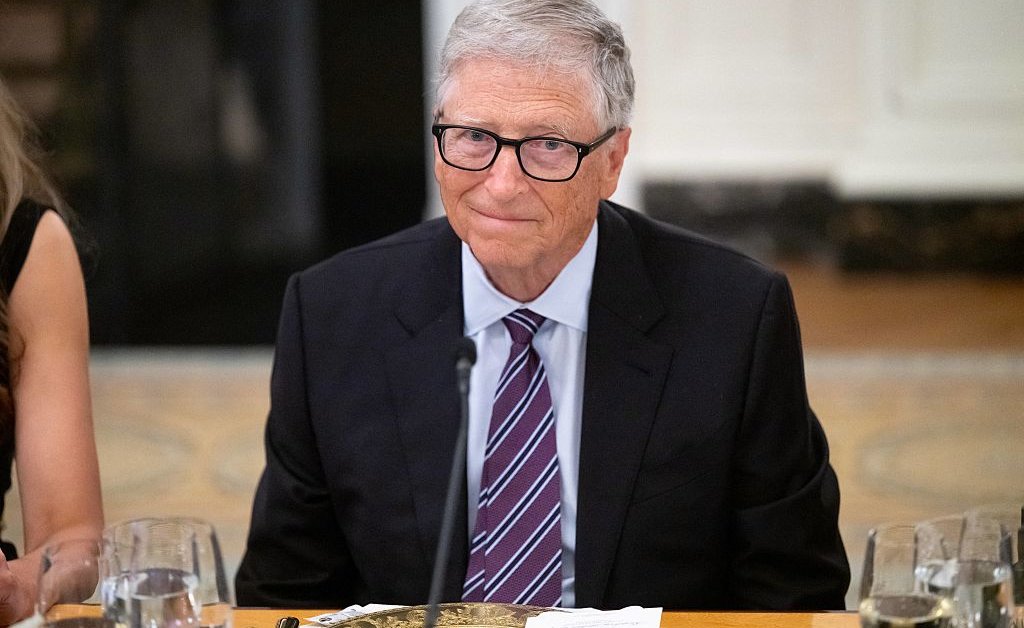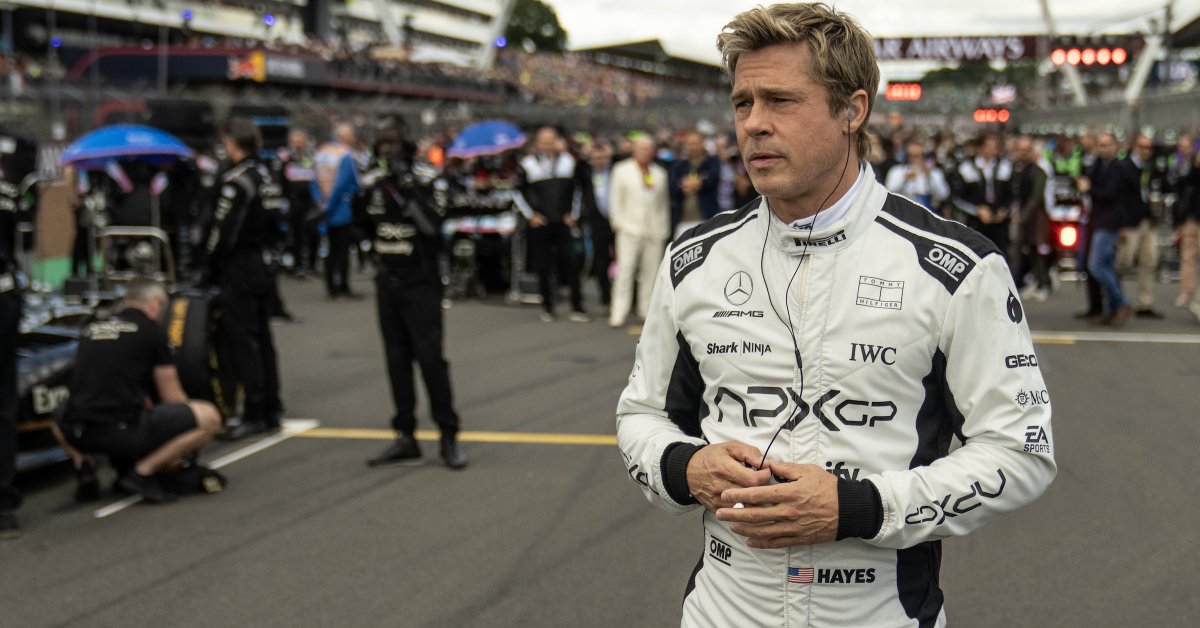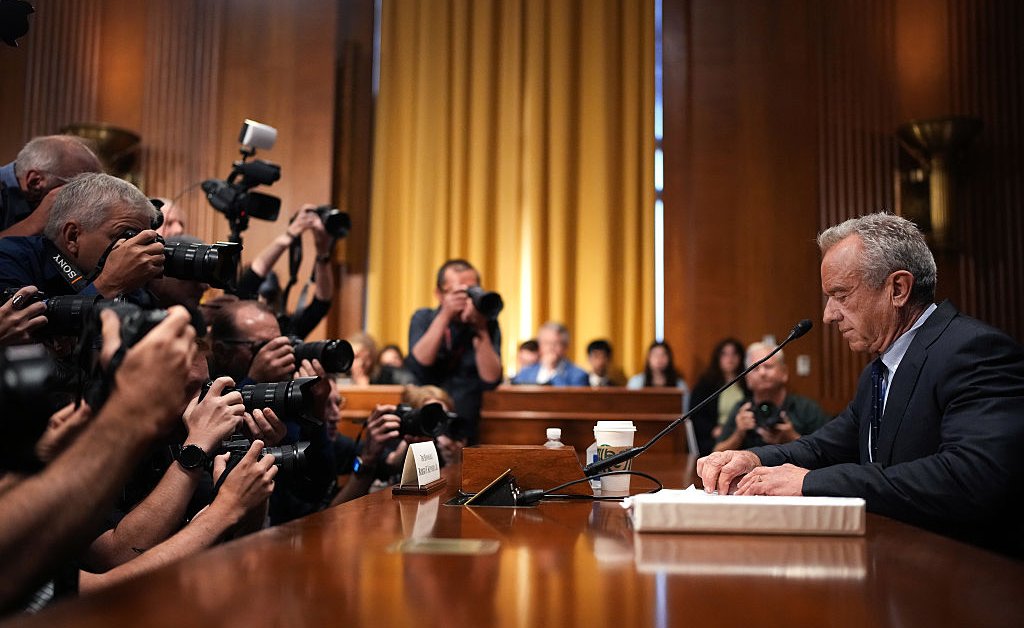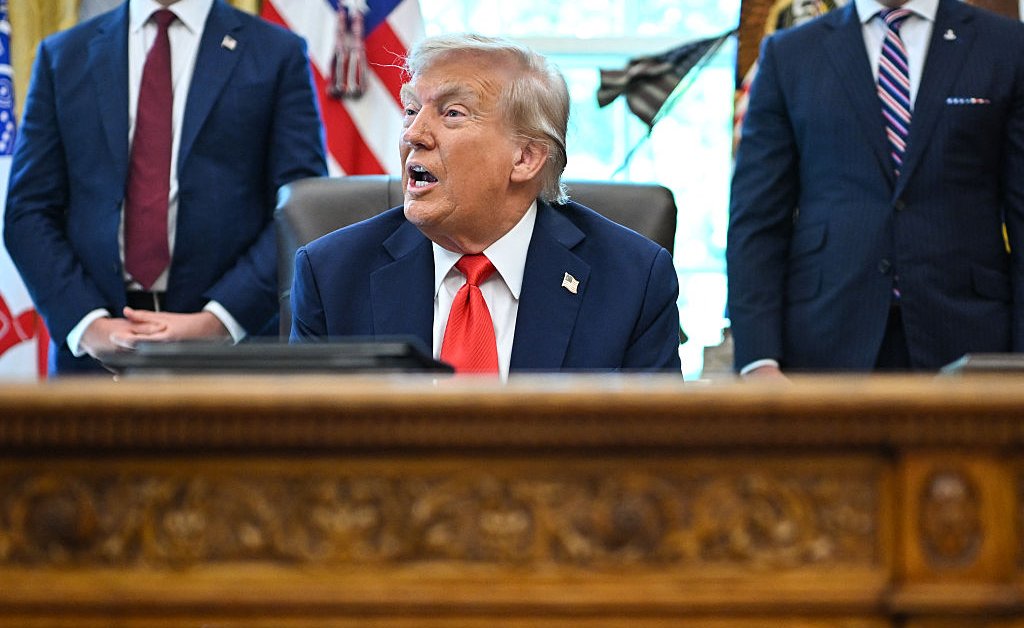The past quarter of a century of global public health has been shaped by Microsoft founder Bill Gates; his nonprofit, the Gates Foundation; and his seemingly endless optimism.
Through the Great Recession, the war in Ukraine, and the COVID-19 pandemic, the billionaire has consistently stuck to his sanguine stance: though it may be hard to believe, the world is actually getting better.
This year, Gates’ optimism has been put to the test. As Cindy McCain, executive director of the World Food Programme put it, “It has never been harder to be a humanitarian.”
The Trump Administration gutted foreign assistance and raised fundamental questions about the roles of science, public health, and U.S. diplomacy that underlie the majority of Gates’ life’s work. With a slew of executive orders, President Donald Trump eliminated the U.S. Agency for International Development (USAID), withdrew the United States from the World Health Organization (WHO), and slashed funding to the flagship American HIV-AIDS assistance program, PEPFAR. Citing Trump’s newly imposed tariffs, continued conflict in Ukraine, and aging populations, other wealthy countries in Europe have also cut back on foreign assistance.
When Gates announced in May that he would close his foundation by 2045, it would have been understandable to interpret the decision as an end of the era of American optimism that Gates helped usher in. But in a TIME op-ed, Gates maintained that this wasn’t a sign of defeat.
“I’m not naive. I don’t expect most governments to suddenly restore foreign aid to historic levels. But I am an optimist,” he writes. “Because while things may seem dire right now, two things can be true at once: what’s happening to the health of the world’s children is worse than most people realize, and our long-term prospects are better than most people can imagine.”
In an interview with TIME, Gates explains this paradox—and reveals what he is doing behind the scenes to help persuade leaders, like Trump, to capitalize on the opportunity to save lives.
Studies have found that the suspension of USAID and PEPFAR funding will likely cause HIV-AIDS-related deaths to increase by up to 630,000 per year. You’ve estimated that millions of more kids will die each year as a result of reversed progress. What fuels your optimism, given these estimates?
In the short run, everybody should be extremely concerned, because there were some surprising cuts. For example, the USAID staffing was cut by like 98%.
In the case of Congress, I think we have a strong consensus from both parties that if there are any cuts at all, they should be quite modest, on the order of 10% cuts to these issues. Which isn’t great, but we can get the prices of vaccines and drugs down. We can use digital tools to operate with less head count. We’ll be smart with whatever money is there, because we’re very hands-on and global health is extremely well-measured. [We can] see what the outcomes are to make sure all the money’s having the right impact.
My optimism is not so much about the short-term, although we’re going to do our best. And given the morality of the costs, the golden rule of helping those in need suggests we should succeed at that. But if you zoom out, I do think these budget pressures will be less over time, and we will see innovation of new tools, including using AI.
In the 20-year time frame where I’ve committed to spend all of my money, I do think if we maintain the generosity, not a gigantic increase, that we will be able to continue the miracle that got us from 10 million deaths a year of children now down to low, below 5 million.
I hope I’m not being naive. If budgets were cut enough, then deaths will actually go back up. They’ll go back up by a lot. We did studies that showed there’s no free lunch here. This money saved tens of millions, [so] if you cut the money, then there are tens of millions of lives that you’re going to lose.
In your announcement that you would wind down your foundation in 20 years, you cited Andrew Carnegie’s 1889 essay The Gospel of Wealth. Carnegie spent his life and fortune building lasting institutions. And in his essay, he says that the greatest investments that the wealthy should make are to institutions such as colleges, libraries, hospitals, parks, concert halls, which evolve over time. Why not build a sustainable institution with a life expectancy longer than 20 more years?
I want to have as much impact as possible during the 20-year period. There will be lots of wealthy people after these 20 years, and they’ll be way more up-to-date about what’s going on with AI, what’s going on with geopolitics, which of the diseases did we not get rid of.
By getting rid of polio and malaria, doubling down now, then you save massive amounts of money, as well as improve health out into the future. And so I don’t think some document I write today will necessarily be wise in terms of how money should be spent more than 20 years from now. And I don’t care if there’s an institution having my name on it.
And so having more money [to address global health] now is better than having a long lifetime. And in a way, I think it clarifies for people: we’re about the impact, not about the institution or the visibility of the institution.
You’ve had long conversations with President Trump. You’ve said you were “impressed” with his interest in global health. You spoke more recently at the White House about innovation in AI, vaccines, and medicine. Given Trump’s interest in these efforts, are you optimistic that he’ll minimize these cuts?
The foundation works all over the world; the U.S. appropriately, because it has by far the largest economy, even though, as a percentage of its economy, it is less than half as generous as, say, the European countries are, on average—[the U.S.] has been the biggest funder of global health. I showed President Trump recently how important the U.S. is, and that the other [countries] do give to these efforts as well.
I do think that Congress doesn’t want to see an abrupt cut. These issues came up in Trump’s first presidency, and they maintained the generosity, which was absolutely fantastic.
My conversations with President Trump haven’t concluded, so I’m hopeful I’ll get him to speak out [for] the cuts [to be] quite modest. Currently, some of the cuts are pretty dramatic, both to the money and to head count. Competition for his time is very high, but I have gotten to see him several times recently. So we’ll see what we can get support for.
What I’m saying to him is, if you make a very modest cut, we’ll make sure that the money is well spent and there’s no additional deaths. But if you have the kind of cuts that are, in fact, the reality today and what’s being paid out, there will be millions of additional deaths.
The crux of this issue seems to be a growing gap between what is increasingly possible with new science and declining political willpower and belief in science. What do you think is the path forward in terms of closing that gap?
The basic morality of child survival is as strong as ever.
One great thing about global health is everybody agrees we should reduce the death of children. Education, for instance, is very complicated in terms of what exactly you’re optimizing for. But in global health, thank goodness, the golden rule goes back to every religious tradition. And [I believe] we can get people’s attention on this idea that, in the case of the U.S., 1% of the budget should go to help the poorest.
Nothing has changed in terms of the importance of this. The world is richer today than ever before. Sometimes it may not feel that way. But I think if we get in front of people, including, in front of Congress, where we’re actually doing quite well on these issues, we can get very strong support.
This interview has been edited and condensed for clarity.








